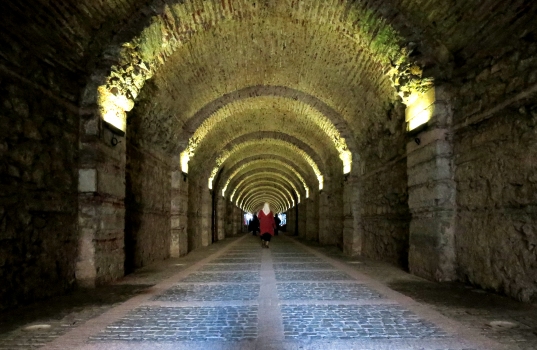General Information
| Name in local language: | Beylerbeyi Sarayı Tüneli |
|---|---|
| Beginning of works: | 1829 |
| Completion: | 1832 |
| Status: | out of service |
Project Type
| Function / usage: |
Road tunnel |
|---|---|
| Structure: |
Tunnel with masonry lining |
Location
Technical Information
Dimensions
| length | 230 m |
Excerpt from Wikipedia
The Beylerbeyi Palace Tunnel (Turkish:Beylerbeyi Sarayı Tüneli) is a historic tunnel under the Beylerbeyi Palace in Beylerbeyi neighborhood of the Üsküdar district in Istanbul, Turkey connecting Üsküdar with Beylerbeyi and Çengelköy.
Commissioned by Ottoman Sultan Mahmud II (reigned 1808–1839) in 1829 and completed in 1832, the tunnel is situated under a hill on the Asian side of the Bosphorus, which is today the terrace garden of the later-built Beylebeyi Palace.
The tunnel with 2.90 m (9.5 ft) clearance served until the 1970s. It was used as museum and exhibition site after its closure.
On 19 September 2016 the tunnel re-opened to traffic in order to ease the traffic congestion on the coastal road in the area under the Bosphorus Bridge, and later shut down again to preserve the historic structure from damage caused by exhaust emissions.
Text imported from Wikipedia article "Beylerbeyi Palace Tunnel" and modified on October 22, 2020 according to the CC-BY-SA 4.0 International license.
Participants
Currently there is no information available about persons or companies having participated in this project.
Relevant Web Sites
- About this
data sheet - Structure-ID
20080260 - Published on:
22/10/2020 - Last updated on:
28/05/2021





